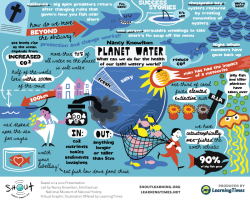Ashley Naranjo
Ashley Naranjo, M.Ed. is a museum educator, specializing in the use of digital resources for teaching and learning. She currently manages distance learning initiatives and education partnerships for the Smithsonian. Portfolio highlights have included: the Smithsonian Quests digital badging program, Smithsonian Online Education Conferences, Smithsonian Learning Lab nationwide teacher professional development, Teachers of the Year programming at the Smithsonian, “Explore with Smithsonian Experts” video series, and Smithsonian print publication guides.
Before coming to the Smithsonian, she has had experiences in education in both formal and informal learning spaces: as an ESOL instructor for adults, a middle school teacher in the humanities and a summer programs administrator. She holds a B.A. in Human Development (Developmental Psychology) from the Lynch School of Education at Boston College, where she was a research assistant and independent study student in the Laboratory of Thinking, Learning & Cognition in the Arts. She completed a M.Ed. in Learning Design and Technology from the Rossier School of Education at the University of Southern California, with a thesis entitled, “Using Digital Museum Resources in the Classroom”. She is a 2019 graduate of the Getty Leadership Institute’s NextGen of Museum Leaders program.
Ashley Naranjo's collections
Zora Neale Hurston: Author, Anthropologist and Folklore Researcher
 Ashley Naranjo
Ashley Naranjo
World War I Stamps
 Ashley Naranjo
Ashley Naranjo
World War II Homefront Posters
 Ashley Naranjo
Ashley Naranjo
What Makes You Say That?: Interpretation with Justification Routine with a Poster
 Ashley Naranjo
Ashley Naranjo
What Makes You Say That?: Interpretation with Justification Routine with an Artwork
 Ashley Naranjo
Ashley Naranjo
What Makes You Say That?: Interpretation with Justification Routine with a Historical Photograph
 Ashley Naranjo
Ashley Naranjo
Visual Art and Music
 Ashley Naranjo
Ashley Naranjo
U.S. Presidential Inauguration Resources
 Ashley Naranjo
Ashley Naranjo
Using Digital Resources to Integrate Asian Pacific American Experiences in the Classroom
 Ashley Naranjo
Ashley Naranjo
Thomas Paine's "Common Sense"
 Ashley Naranjo
Ashley Naranjo
The Invention of Thanksgiving
 Ashley Naranjo
Ashley Naranjo
The Gunboat Philadelphia
 Ashley Naranjo
Ashley Naranjo











